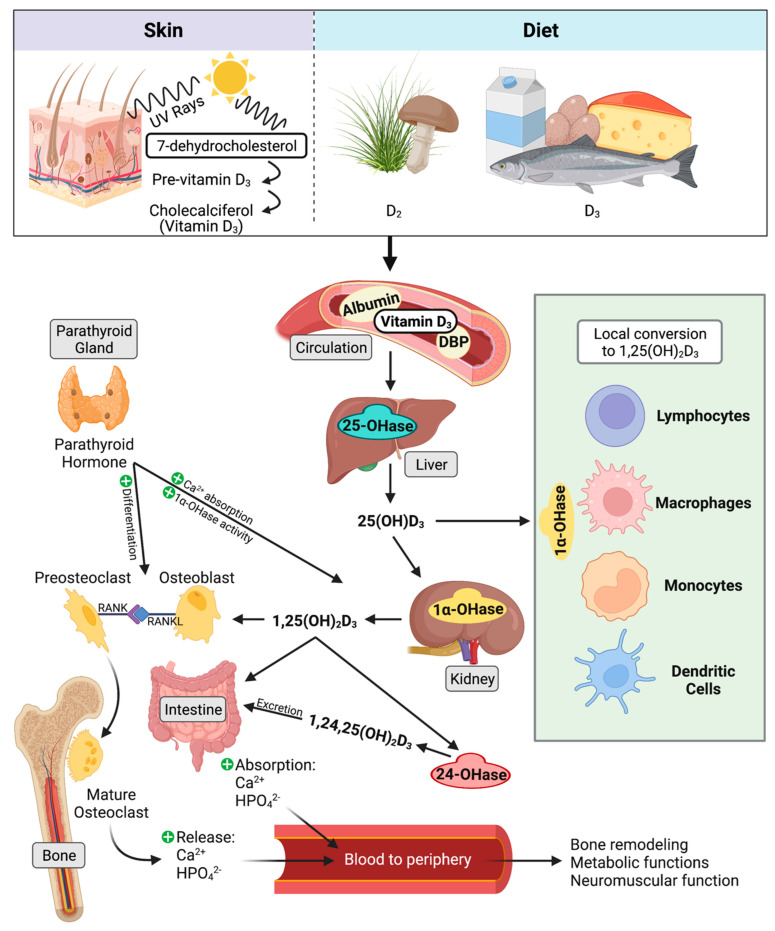Figure 1.
Vitamin D is synthesized in the skin or obtained from the diet. The most common and more potent form, vitamin D3, is focused on in this review. Vitamin D3 is converted to 25(OH)D3 in the liver. Classical effects on calcium homeostasis begin in the kidney, where 25(OH)D3 is converted to bioactive 1,25(OH)2D3. 1,25(OH)2D3 increases osteoclast differentiation and activation, and upregulates calcium and phosphate absorption in the gut. Concurrently with 1,25(OH)2D3, parathyroid hormone stimulates osteoclasts. It additionally upregulates 1α–OHase (CYP27B1) activity and calcium reabsorption in the kidney. 25(OH)D3 and 1,25(OH)2D3 are both inactivated by 24–OHase (CYP24A1) and are excreted in the bile. Non-classical signaling of vitamin D3 involves local activation of 25(OH)D3 to 1,25(OH)2D3 by 1α–OHase (CYP27B1) in cells of the immune system. Figure created using BioRender.com (accessed on 28 July 2022).

